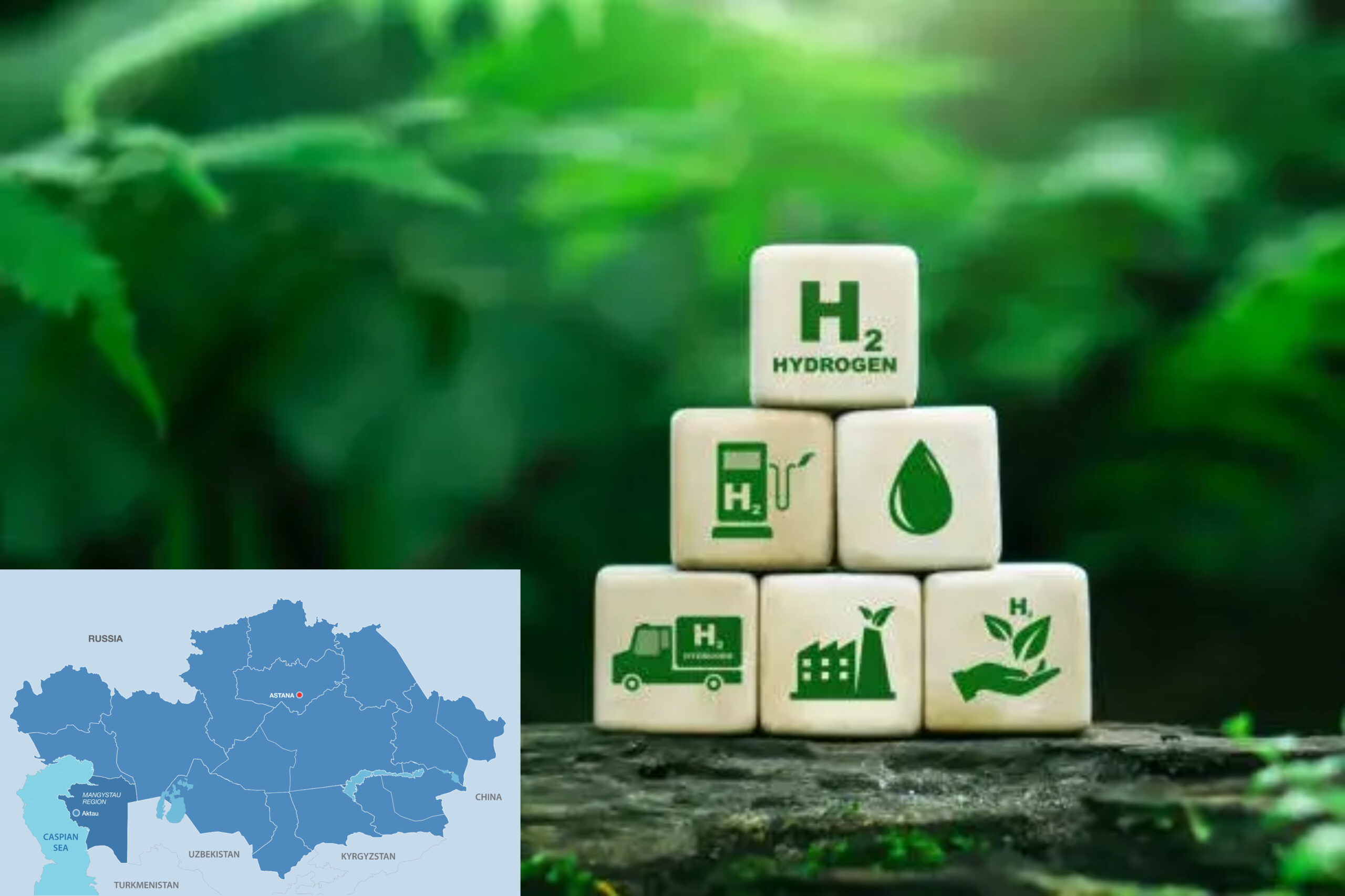ASTANA – The implementation of a green hydrogen production project will occur in the Mangystau Region, chosen for its exceptional wind conditions at altitudes greater than 100 meters, as reported by Mangystaumedia.kz news agency in early February.

Photo credit: mangystaumedia.kz. Click to see the map in full size. The map is designed by The Astana Times.
Hydrogen production in this region will utilize electrolysis of water powered by electricity generated from solar and wind power plants. Hyrasia Energy, a subsidiary of Svevind, a German-Swedish company, will oversee the production of green hydrogen and its derivatives (ammonia).
Ainur Tumysheva, the director of Investments at Hyrasia Energy, emphasized the environmental benefits of green hydrogen production, which involves no emissions when generated from solar or wind energy sources.

Ainur Tumysheva, director of Investments at Hyrasia Energy. Photo credit:mangystaumedia.kz
“Hydrogen itself is stored either in liquid or gas form and is utilized across all energy-intensive industries, including metalworking, the production of construction materials, fertilizers, and food products. Any process that requires a large amount of electricity uses either hydrogen, ammonia, or methane, which are derivatives of hydrogen,” she said.
The project will include the construction of infrastructure, including wind and solar power plants, roads, power lines, transformer stations, and other facilities. Several clusters for electricity generation will be built across different areas of the region. The industrial park in the Karakiya district near the Kuryk village will house essential facilities such as a water demineralization plant, an electrolysis plant, and an ammonia synthesis plant.
“All productions will be constructed simultaneously, including wind turbines and solar panels. The project aims to obtain 70% of electricity from wind and 30% from solar,” said Tumysheva.
She further detailed the project’s development, noting the installation of meteorological masts imported from Europe in August 2022. These masts, currently situated in various regions of the area, continuously provide data including wind direction, density, speed, and circulation.
“Using this data, we are engaged in developing engineering documentation to determine the precise placement of each turbine. The balancing act is crucial due to the variable nature of alternative energy sources. Therefore, we are structuring the technical process to ensure a consistent flow of electricity,” she said.
Land surveys are currently in progress, to be followed by the acquisition of permits and licenses to ensure compliance with Kazakh and international standards for technological and environmental safety, a process expected to take approximately three years.
“If the current project development pace is maintained, construction of the initial phase is anticipated to commence in 2027, with large-scale production expected to start by 2030,” Tumysheva stated.
She noted a global trend toward green hydrogen, with many countries transitioning to renewable energy sources, though a significant global market is anticipated only by 2030.
Tumysheva highlighted forecasts from the International Energy Agency, which indicate a projected demand of approximately 100 million tons of green hydrogen by 2030. The production capacity in Mangystau is expected to reach two million tons annually.
Initially, production will be export-oriented, with efforts underway to identify potential consumers within Kazakhstan. Tumysheva highlighted the impending carbon taxes in various countries, including the European Union, the United States, Korea, Japan, and China, underscoring the necessity for producers to adopt green energy resources for future exports.
Addressing the issue of water usage in production, particularly significant in the context of declining Caspian Sea levels, Tumysheva mentioned that this aspect is under thorough examination. A two-year analysis is being conducted by specialists from a German engineering company and Kazakh ecologists, focusing on the environmental impact on the Caspian Sea.
Tumysheva stressed that final engineering documentation on water usage is essential to proceed with the project.
As per the signed investment agreement between Svevind and the Kazakh government, the company is obligated to create jobs for Kazakh citizens.
“According to the agreements, 90% of all employees must be Kazakh citizens. Achieving 100% localization is challenging due to the industry’s novelty. Technology and knowledge transfer from foreign specialists will be necessary,” said Tumysheva.
Last summer, German Federal President Frank-Walter Steinmeier visited Aktau to launch test drilling at a major green hydrogen production plant and endorse the Kazakhstan-German Institute of Sustainable Engineering Sciences. Graduates from this institute are expected to contribute to the project’s workforce. Preliminary estimates suggest that 1,800 jobs will be created.

